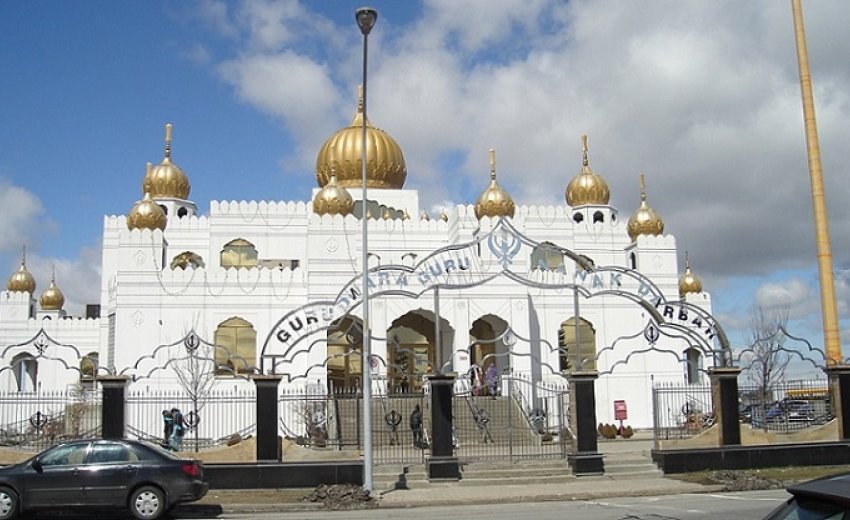Just as Cassandra, the legendary seer of ancient Greek mythology, I bring you news, good and bad; welcome and not so welcome. Even though her predictions were true, she was cursed by Apollo so that no one would believe her.
My simple purpose today is to foster a conversation.
I came to America in 1960 well before the eras of Jack Kennedy or Martin Luther King. There were perhaps three recognizable Sikhs in the New York area, and obviously no gurduara. When people asked if I and my kind had a place of worship nearby my response depended on the company and the questioners. A flip answer was “Yes there is but it’s about 3000 miles away in California.”
During my years in Oregon in the heady 1960’s I learned that several neighboring states had no gurduara and perhaps a rare Sikh or two. I mean in Oregon, Washington, Idaho, Utah, Wyoming, Montana, the Dakotas and many more in the Midwest there was no gurduara. Things have changed now, but not all that much. Oregon and Washington now have two or three gurduaras each, and I am not so sure about the others.
On the eastern seaboard, where I now live, there are presently perhaps 20 or more within commuting distance. And many more are sprouting every day. I have lost count of how many exist and flourish in the United States and Canada, but I know that the number is larger than 200.
As an aside, we do need a comprehensive directory of gurduaras in North America but the landscape changes in a trice. (Editor’s Note: Please see the Worldwide Gurdwara Map online.)
We have dissected minutely and ruefully how disorganized gurduara management often is, how distasteful their organizational shenanigans, and how poor and largely irrelevant their programs and activities. (Yes, I know there are some exceptions to my overarching judgmental tone but that’s not the issue today.)
We unfailingly pick up on such matters and these then lead us to passionate disagreements and divisions within the community. Of course, we are weighing them from the perspective of our place in the diaspora far from the comfortable (?) cocoon of Punjab and India.
But one thing we can all agree on: The investment, financial as well as the blood sweat and tears, in our gurduaras is phenomenal for an immigrant community. Keep in mind that our formidable presence here dates to barely 40 years, even though Sikhs have been in the U.S.A. since the Panama Canal was constructed in 1903-04.
I remember when in New York’s Big Apple we held worship services, first monthly and sometime later weekly, in a small rental hall, the cheaper the better. I remember when we looked for abandoned churches to buy and convert to gurduaras. Nothing surprising in this, shifting demographics made these buildings available and our growing presence hungry for suitable space made it necessary.
How things have changed.
I see now that the new gurduaras going up are majestic gilded palaces – multimillion dollar shining marble monuments on the hill guaranteed to grab your attention. But they remind me of “White Elephants.”
Emotions and sentiments are hard to compromise. I see that when the Sikh community feels flush and pushed for a more spacious or attractive place the idea is floated that perhaps we can sell the old, smaller, more modest gurduara building to others – even to non-Sikhs.
But such proposals are squashed faster than an irritating bug, often without a community debate. The logic (or ill-logic) pushed forward is simplistic to the extreme; to wit, that no gurduara building is ever sold; it is irreverent or sacrilegious even to entertain the idea. Money may be raised to expand and renovate, even demolish and renew but to never abandon the old facility or the land that was once a gurduara, hence hallowed ground. Incidentally, I know of a Midwestern gurduara that is right now painfully wrestling with the choice to sell or not to sell its building.
I have thought some about these matters and, only recently, the related attitudes resurfaced in The New York Times.
After more than two centuries in New York the Roman Catholic Church is re-examining its place in a new changing world and how its goals are best served. The administrative structure is being reconfigured.
Historically, parish is the territorial unit of a church; it covers a given geographical area and its people. Such diocesan administrative units are commonly seen in the Roman Catholic, Anglican and some other denominations of Christianity.
New York is a large territory with 2.8 million Catholics in 368 parishes. The economy has shrunk, money is tight, church attendance is not what it used to be, and skilled clergy not as plentiful. The focus naturally has shifted to reorganization.
The plans are that out of 368 parishes 112 shall be merged to recreate 55 new parishes. As many as 57 parishes would be shuttered and, sooner or later, many may be sold.
How is the Church responding? Most community churches are not mega-churches, not white elephants, not majestic like St. Patrick’s Cathedral or others of that ilk. The historical cathedrals speak of history and tradition and will be preserved; many storefront churches serve the community and may be reorganized and recombined, opened or closed as needed.
Of course, this is unsettling old traditions and many church goers are becoming increasingly uncomfortable.
Now look at this: In building gurduaras in America the emphasis seems to be on bigger is better, the gaudier it is the more traffic it would have. Do we think the gurduara is an advertisement of the financial success of the community? We also need to re-explore the immigrant community in the diaspora outside the cocoon of Punjab and how best will their needs be served now and in time.
An aside I am intrigued by the Orthodox Jewish idea of building synagogues that are no more than a 15-minute walk for anyone; this promotes learning, neighborliness and a better esprit de corps in the community. The mega-gurduaras would always have a place but small store front gurduaras would nurture congregational cohesiveness.
Keep in mind that what distinguishes a great university from Podunk College is not so much the marble or the gold but the content and quality of the faculty, students and academic programs.
My purpose today is not to scare Sikhs into a passive-aggressive stance or a defensive crouch but to put our thinking turbans on.
I suppose as long as there is a substantial wave of new immigrant Sikhs arriving in North America there will remain a growing need for new gurduaras to capture the ambiance of a glorious Punjab but what will happen when demographic trends change, as they eventually will?
Will we abandon and sell our old gurduaras that no longer fill our need? Will they re-emerge as churches and temples again to cater to a new bloc of immigrants from a different culture and religious calling?






